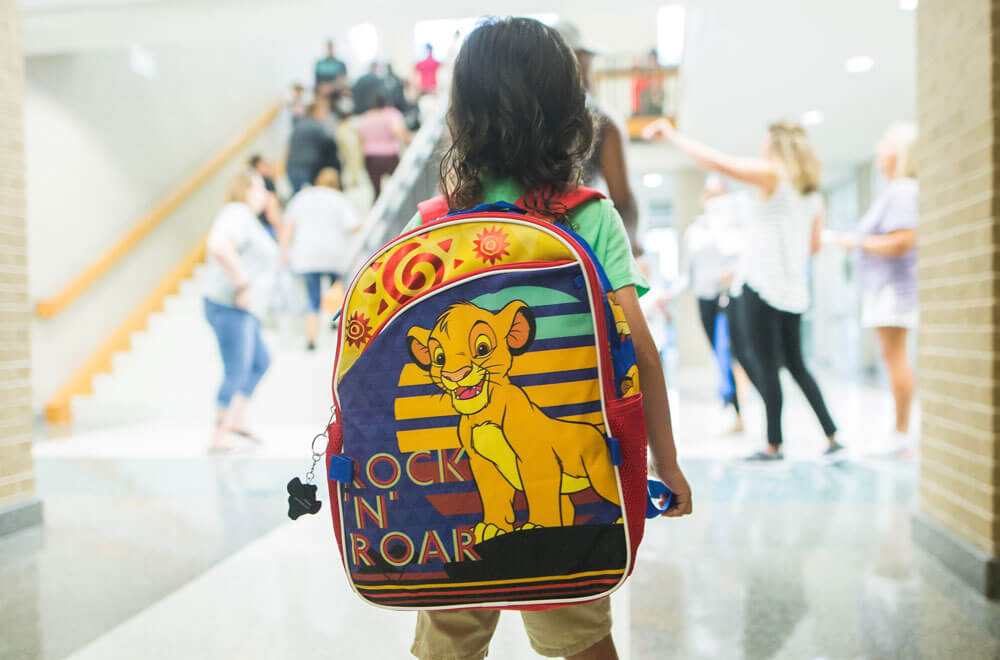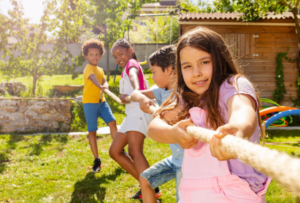By Karen Conley, President, CEO and founder of Charity for Change
As we relish these last few weeks of summer, it’s time to ask: are we ready for the new school year? Like any major shift in our day-to-day lives, change can bring on stress, and the beginning of the academic year is no different. Combined with the health, economic, division and violence we have experienced over the last few years, anxiety, depression, and stress-induced behavior are on the rise, especially among our youth.
The proverb, “It takes a village to raise a child,” is apt when it comes to transitioning back to school. There are steps we can all take – educators, parents, caregivers – to ensure that our children start the school year with a strong foundation that sets them up for success and, hopefully, helps them enjoy school and love learning!
Teachers Supply Support in the Classroom
Building a positive and encouraging environment where children can learn and thrive is the goal of every educator. Teachers and school personnel are critical to supporting children during this transition to the classroom. And we must lead by example by remaining calm, positive, and reassuring while welcoming our students back to school. Here are a few other ways to help:
- Reveal the Unknown. Stress is not brought on by fear, it is caused by uncertainty. To help alleviate the stress students have during this transition, think of ways to reduce the ambiguity that a new environment, teacher, classmates and more bring. Such as by setting clear expectations around classroom behavior and study habits; creating daily and weekly routines that children can easily adapt to; or involving students in decorating the classroom or desk areas. Engaging children and being honest about expectations will foster an environment where students feel safe, welcome, and ready to learn.
- Balance Challenges with Support. Students need to be challenged, as well as, supported to build their resilience, but it is a delicate balance. Too many challenges can cause extreme stress, fatigue and isolation. And too much support can lead to laxity and boredom. The key to this balance is perspective, reminding students of the big picture – like completing a class project – while helping them develop bite-size strategies and steps to focus on. Remember to praise students for their participation and efforts and allow them the space to learn from any mistakes.
- Give Them a Place to Belong. The teacher-student relationship Is at the heart of a child developing their sense of belonging. Taking the time to check in with each student can go a long way to fortifying their wellbeing and academic success. If a child is showing signs of stress, offer them the opportunity to have a one-on-one conversation and listen to their concerns with empathy and understanding. At the beginning of the school year, students may initially have difficulty concentrating and adapting to a new routine. Offset this struggle by giving children time to connect with their classmates and move around in their new space.
- Take Care of Yourself. We know that teaching can be a stressful and demanding profession. You must take the time to care for your own physical and mental health. Your self-care cannot end with the summer break. Design a self-care routine or plan especially for the school year to help you cope with stress and focus on relaxation. Incorporate mindfulness strategies throughout the day to avoid burnout. Remember to reflect on your “why” for teaching and if you are ever feeling overwhelmed, seek support and help. Lead by example by showing your students how an adult should care for their whole health.
Parents Provide Guidance Outside the Classroom
Parents and caregivers can help children grow and develop as lifelong learners by being supportive, informed, and connected to their education. Keeping in contact and getting to know the teachers, attending school events, and talking with other parents can help you understand the expectations and milestones of your child’s academic year. A few other tips to help your child succeed in school:
- Stick to a Routine. Establishing a daily routine will help your child be alert and ready to learn. It is recommended that most children receive 10 to 12 hours of sleep a night. Having a consistent bedtime routine that includes allowing your child to unwind and limiting stimulation will help them receive the rest they need. Breakfast also prepares children for the upcoming school day. A morning meal can help boost kids’ energy, attention span, concentration, and memory.
- Back Assigned Homework. Yes, we all remember how we didn’t like homework. However, these afterschool assignments reinforce what kids learn, as well as help them develop their study skills. Additionally, homework aids children in acquiring responsibility and work ethic. If possible, be available during homework time to answer questions, offer guidance and review completed assignments. However, be sure to avoid giving the correct answers, letting your child learn how to discover and find the solution themselves.
- Create a Study Space. Having a well-lit, quiet, and comfortable study space will help your child adapt to homework time. Establishing a start time for homework, avoiding distractions like TV, and having a break every 45 minutes will also help your child when studying. If homework, studying, or testing becomes a source of extreme stress for your child, be sure to reach out to their teacher and/or school counselor to discuss the situation.
- Talk about School. It’s easy to become busy and assume that if you don’t hear anything that must mean everything is okay. But taking the time to talk to your child each day about their school experience can have a positive effect on their academic success. When talking be sure to make eye contact, listen, and ask questions that go beyond ‘yes/no’ answers. These conversations can take place during car rides, in line at the store, during meal prep, dinner, or on evening walks.
Social-Emotional Learning (SEL) Programs Help Students, Teachers & Parents
Incorporating Charity for Change’s SEL program in classroom curricula can have a significant impact on students’ learning process by helping them set goals, make decisions, manage their emotions, and form positive relationships. Research has shown that these key skills give students a strong foundation for academic achievement, as well as giving children lifelong characteristics that stay with them into adulthood.
By partnering with our team, implementing Charity for Change’s SEL program in the classroom is easy and seamless. With your support and enthusiasm, students can learn positive behaviors that help the school day run smoothly, bring home improved communication and optimistic attitudes, and develop lasting leadership skills.
About the Author
Karen Conley is President, CEO and founder of Charity for Change, a non-profit social-emotional learning educational organization funded by philanthropy. For information, visit charityforchange.org.





